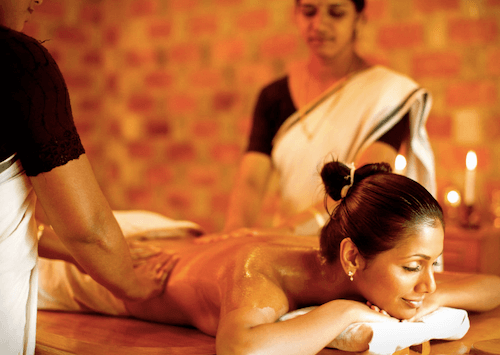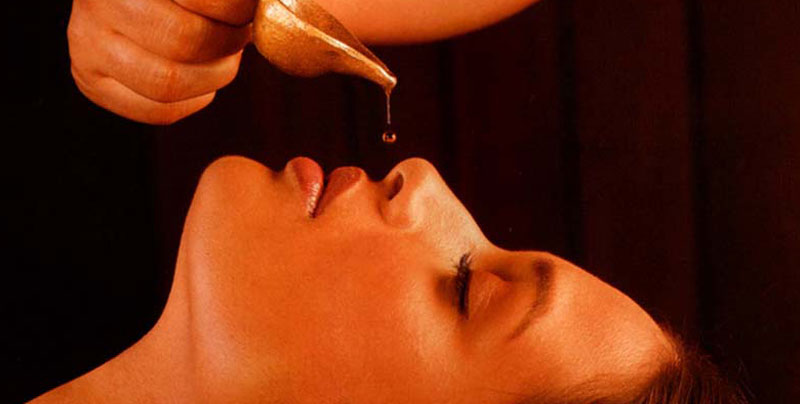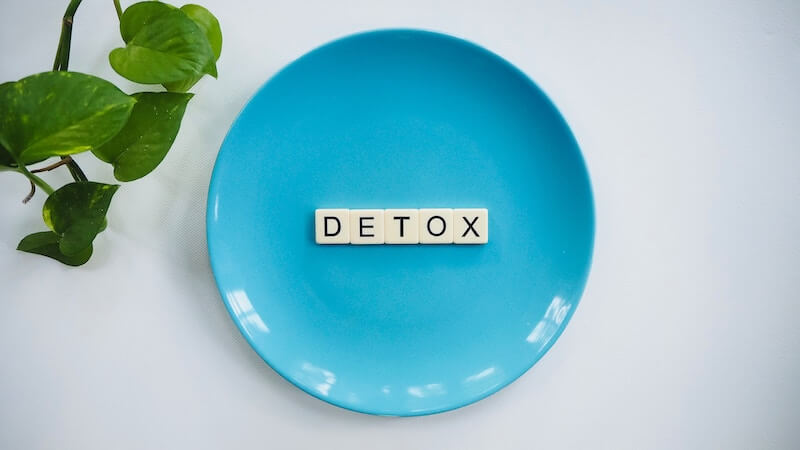Panchakarma is a process of Ayurvedic detoxification which has the power to treat even chronic illness like psoriasis, eczema to spondylitis.
Ayurveda, an alternate medicine system from Vedic culture has gained a lot of popularity in the last two decades because of the effectiveness.
Patients with a long history of chronic ailments have found their health and vitality back with this powerful ancient detoxification system. It is these people who have spread their word about this powerful practice.
Panchakarma comes from two Sanskrit word Pancha meaning 5 and karma meaning activities. So Panchakarma is a detoxification method which involves 5 major steps.
Panchakarma is a complete mind-body healing experience that gets you rid of the stored toxins, emotions in the body to bring back your body in its natural state.
But what is your natural state? In the next section, we will explore all about our bodies natural state and how Panchakarma helps us get it back.
Ayurveda and your natural state
Ayurveda is a science of holistic healing. A science that takes care of your entire body, emotions and soul. It is a 360° system of healing that believes in preventive therapies. By changing your diet, most of the problems in your body can be fixed.
Ayurveda is the bigger science that encompasses Yoga, meditation and herbal medications.
Together they comprise a system so profound that it had been used since the last 5000 years and still getting accolades each day.
According to Ayurveda, the natural state is of health, bliss and peace. A healthy natural state is where the body is free of toxins, the mind is at peace, emotions are calm and happy, wastes are efficiently eliminated and organs are functioning normally and we allow ourselves to go with the flow.
Our bodies are designed to achieve that stage each day. Our digestion eliminates waste in the system, our bodies perspire to give way for toxins through the skin, unwanted toxins are eliminated via the urine.
However, as humans, we have not found the right way to get rid of stale emotions and feelings.
Due to our lifestyle, food habits and emotions we deteriorate the innate balance of the body and push it farther away from the natural state.
When the body is not in a natural state, it starts behaving abruptly.
Weight gain, hormonal imbalance, chronic ailments like psoriasis, mental issues like anxiety, stress and lifestyle disorders are few examples of these imbalances.
Why do an Ayurvedic detox?
Ayurveda emphasizes preventative and healing therapies along with various methods of purification and rejuvenation.
In Ayurveda, every person has a unique body type or psychosomatic formation.
The five basic elements which form the base of all human existence are- Earth, water, fire, air and ether. It is the combination of these elements that doshas are manifested.
The three main doshas are Vata, Pitta and Kapha. Every person has a uniques composition based on the combination of doshas and how they are expressed.
Bad lifestyle, wrong diet, incompatible food combinations, emotions and stress can all make your body go out of balance. Diabetes is one such example which happens due to imbalances in Kapha or Pitta.
Your doshas become vitiated and toxins start accumulating in your body. Also, known as Ama, these toxins are the major cause of all diseases in Ayurveda.
In order to remove ama, Ayurveda follows a detoxification process called Panchakarma for both internal and external cleansing.
What is Panchakarma?
Panchakarma is a five-step therapy to remove the accumulated toxins from the body often known in Ayurveda as ama.
Ama is a sticky substance that clogs the circulatory channels in the body (lymphatic system, blood vessels etc.) and increases the susceptibility of diseases.
The toxins often accumulate due to our lack of knowledge of food combinations, pollution, a lot of junk or because you are eating food against your Prakriti or dosha composition (the unique composition of the body).
Panchakarma cleanses the body internally and externally. It removes toxins from the channels of your body and restores your prana. It also brings back the balance in the body.
It opens up clogged channels and allows free passage of toxins from the body. After the treatment, your body becomes revitalized and rejuvenated completely.
Panchakarma is done over a period of 5 to 21 days based on the severity of the problem. The complete panchakarma treatment consists of five procedures, namely, Vamana, Virechna, Basti, Nasya and Rakhta moksha.
Before going for the complete treatment, a small regimen called Purva karma is undertaken to prepare the body for purification.
Purvakarma
During the first few days, the body is prepared to release the toxins by following these two methods,
Oil Massage (Snehana)
Snehana or oil massage is done with warm oil over a period of 5-7 days as needed. This is done prior to the actual Panchakarma therapy. This method allows the body to prepare for the treatment.

In the therapy, a massage is performed to move toxins towards the gastro-intestinal tract. This also makes the tissues soft and supple.
Steam ( Swedana)
Swedana or steam is taken right after the massage. Swedna is known in Ayurveda to open up the pores and stimulate the removal of toxins.
Sometimes herbs are added to the water for steaming. This allows toxins to loosen their grip and start moving out of the body in the form of sweat or towards the gastrointestinal tract.
Panchakarma therapy steps
Panchakarma involves removal of toxins from all the possible outlets, i.e, through mouth, skin, nose and anus. The five therapies included in the process are,
1. Vamana(Emesis): Controlled vomiting using a herbal medication, often performed 4-8 times.
2. Nasya(Nasal i): Instillation of herbal oils in the nostril.
3. Virechana(Enema): Herbal concoction based enema to clear small intestine off the toxins.
4. Basti(Enema): Oil-based enema treatment to lubricate the dry colon and get rid of accumulated toxins.
5. Rakta moksha(Blood cleansing): The toxic blood is removed by the suction of blood by leeches.
Vamana (Emesis Therapy)
Vamana or emesis is induced vomiting using either saline water or some herbal decoctions. This process removes excess Kapha from the system which causes congestions, bronchitis, allergies and asthma.
The treatment removes excess mucus from the lungs. This process removes excess Kapha from the system along with suppressed emotions in the body.
Vamana unclogs the sinuses and lungs and the person can immediately feel the difference in the breathing.
The voice becomes clear and the mind becomes calm. This practice is especially important for people suffering from Asthma, diabetes and stomach related issues.
After Vamana, one should avoid eating raw fruits and vegetables as it increases the chances of infection. Light cooked meal is ideal for people.
Virechana (Purgation Therapy)
Purgation or Virachna therapy is induced bowel movements using laxatives. This method targets the removal of excess toxins in the stomach, liver, gall bladder, kidneys and gastrointestinal tract.
Pitta is excess bile or heat that allows the digestion of food in the system. Excess pitta or bile gets accumulated in liver, intestine or bladder.
It sometimes escapes into the bloodstream causing severe acne, rashes and auto-immune disorders.
People with excess pitta have weak liver and are prone to frequent stomach infections.
It is also responsible for problems like acid-reflux or severe indigestion. Bloating and flatulence are two other problems caused by excess pitta.
Purgation removes excess pitta from the body. The person undergoing the therapy might get loose motions.
This helps remove undigested food and bile from the system. It also removes stored emotions of resistance and stubbornness.
After this therapy, the person experiences less heat in the system. The system seems to cool down and there is a feeling of lightness in the system. Your body seems more flexible and your walk becomes easy.
Basti (Enema Therapy)
Basti or enema therapy of cleansing the intestine via rectal cleaning. Using herbal enemas, water is sent through a tube to your rectal region.
This allows double cleansing of the gastrointestinal tract. The undigested waste is thus taken out of the system.
This treatment gets rid off the excess Vata which in Ayurveda is considered the root cause of a lot of disorders. In Ayurveda, Vata is the causative factor for constipation, piles and IBS.
When excess Vata is removed from the system, it removes bloating and flatulence from the system and also gets rid of emotions of sadness and grief.
Nasya( Nasal Administration)
Nasya is the process of administering warm oil through the nostrils. The nose is the prime organ in the body which is responsible for breathing.
It is also the sole point from where air enters and gets filtered before going inside the body.
In Ayurveda, the nose is also closely connected with the brain and affects it directly.

Breathing is the most powerful for in Ayurveda for healing your body and brain. So Nasya becomes an extremely important therapy in the process.
The oil lubricates the inner lining of the sinus and provides lubrication to eyes, ears and brain. This removes congestion in sinuses. This also helps in controlling snoring.
The fogginess of the brain also goes away due to lubrication. The thoughts become clear and your mind becomes calm.
For this therapy, two drops of oil are put in each nostril either directly using a dropper or using your little finger.
Make sure your nails are cut if using your finger as it might hurt the delicate inner lining. Your nose and your sinus are gently massaged for a couple of minutes.
It might be difficult initially but eventually, it becomes easier and bearable. You can experience clarity of thoughts and calmness immediately after the therapy.
The inner strong inner lining prevents harmful bacteria or viruses t enter the bloodstream. You are strengthening your body’s first defence mechanism with this practice.
Rakta Moksha ( bloodletting)
Rakta Moksha is a traditional ayurvedic blood purification technique which is performed using leeches. The leeches suck the vitiated blood out of the system.
When toxins start accumulating in the body, they eventually make way into the blood.
It is very difficult to cleanse the blood directly from toxins and this leads to frequent episodes of rashes, acne, eczema or any other types of rashes. To eliminate this, bloodletting is performed.
This procedure removes excess pitta from the body. This impacts people suffering from bloodborne diseases. After a few days of treatment, your body becomes free of rashes and the burning and itching sensation.
It is beneficial to avoid excess fermented food, sour food or spicy food during this process.
Diet during Panchakarma
Diet plays an important role in Panchakarma. In order to prep the body, lighter meals are suggested before, during and after panchakarma.
Kitchari, a mixture of rice and moong dal is an ideal food for breakfast, lunch and dinner throughout the Panchakarma journey.
The intake of ghee should be increased with each intake of Kitchari as the toxins are fat-soluble.
During Panchakarma, your digestive system is on a break. The fire is subdued. Hence, a mono-diet of Kitchari is extremely beneficial. It is easy to digest and is extremely nourishing.
No snacks, no sugar, no milk is to be taken during the procedure. However, hot water or ginger tea can be taken as many times.

The process is extremely beneficial and should only be performed under a trained specialist. An Ayurvedic doctor analyses your body type, symptoms, the severity of the disease and the ideal Panchakarma treatment for your concern.
Your next steps can be,
- Deciding if Panchakarma is right for you or not
- Choosing the right Panchakarma centre should be your next step.
If you are in the USA and are looking for Panchakarma centres there, here is a list of 13 best treatment centres. I have provided the cost and ratings to make your decision easy.
If you looking to travel to India for this treatment, you can check out this list fo 15 best Panchakarma treatment centres in India.
However, for some people, they want to try out the process at home first. They want to increase their health and vitality and remove toxins. I have an article about doing a home-based panchakarma. This is a much simpler detox and can easily be done at home. The full benefits of Panchakarma can be availed only under a trained Ayurvedic doctor.
If you find the article beneficial, share with your friends and family.
Comment below if you have gone through the therapy and how was your experience throughout.
Follow us on Facebook and Pinterest and be a part of our growing community.
Chakshu is a US alliance certified yoga teacher, a biotechnologist and an Ayurveda evangelist. Her passion is to help people live a toxic-free life, emotionally and chemically. She loves reading self-help books. When she is not writing, she is busy thinking about life.


